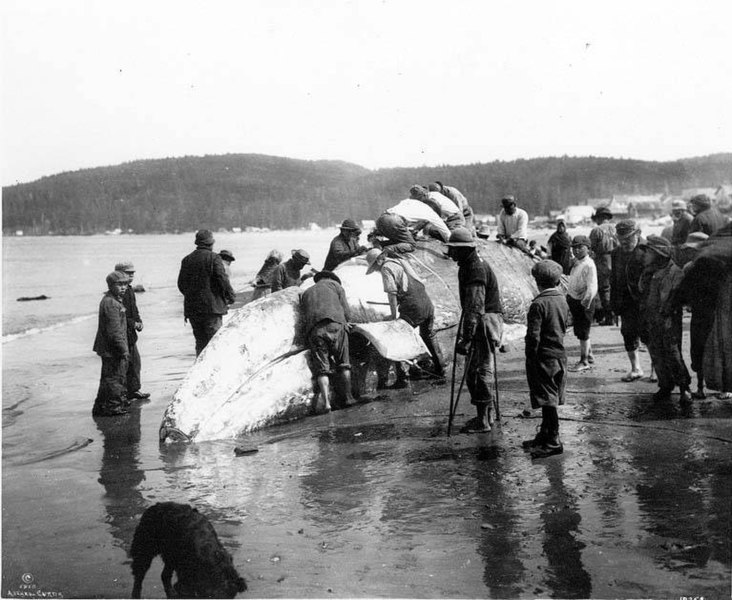Commercial whaling has been banned internationally since 1986 and for good reason – commercial whaling is a bloody affair. Consider this scene of Japanese commercial whaling, which resumed last year amidst international objection:
Off the coast of Japan, a minke whale comes almost vertically out of the water before crashing back down into the open ocean. She swims along before breaching again. This time she meets the sharp blade of a harpoon shot from a nearby whaling ship. The harpoon crashes into her head, burying itself half a meter deep. She struggles to free herself, but before she can the harpoon’s grenade explodes. Shrapnel pierces her body from the inside out. The awaiting whaling ship drags her body onto the butchering deck by her tail, blood mixing with sea spray and dripping into the ocean, true saltwater tears. Her body is rapidly dismembered and rendered. Her body, once 12,000 pounds and 18 feet long, has become a commodity.

The first whale to be caught from Japan’s resumption of commercial whaling (July 1, 2019). © EIAimage
To much of the Western world commercial whaling is morally wrong. Whales are considered to be beautiful and intelligent animals with complex social lives. From this perspective, their slaughter is unthinkable. But a whale is to many Japanese what a cow is to many Americans – food and an expression of culture.
Joji Morishita, Japan’s retiring IWC Commissioner, said on the topic of whaling, “The West are trying to force their values on us. It is cultural imperialism.”
A similar argument is used to defend subsistence whaling by Indigenous peoples, which is a permitted exception to the International Whaling Commission’s 1986 ban on whaling because it is seen as different from commercial whaling. It is not for profit, but for the preservation of cultural heritage and sometimes subsistence.
This is one of the main arguments of the Makah Tribe’s have advanced in their 20-year legal battle for their right to whale off the coast of Washington state. Here is a description of the Makah Tribe’s last whale hunt:
Off the coast of Neah Bay, another whale surfaces, this time a gray whale. It’s 1999 and daybreak. She is being followed by members of the Makah tribe who are on their first whale hunt in seven decades. She surfaces and disappears, but the hunters know what to expect. They paddle their wooden canoes to where they know from experience the whale will next surface and they wait. When she surfaces again, the hunters strike her shoulder blade with a harpoon to slow her down. She swims on, encumbered by her wound, and the hunters follow. Unlike the minke whale’s instant death by grenade, the gray whale suffers until the final kill. The Makah hunters tow the whale home with the help of fishing boats. The awaiting tribal members welcome the whale and hunters, both as family, praising the power that made the catch possible.

Members of the Makah tribe cutting up a whale on the beach in Neah Bay (1910).
On the subject of whaling, Nate Tyler, a Makah tribal council member living in Neah Bay, Washington, explained, “We’re talking rights here. It’s our identity.”
Both Japan’s commercial whaling and indigenous subsistence whaling call upon the cultural argument, but the Western world condemns one and is divided over the other. Yes, commercial whaling has decimated whale populations in ways that subsistence whaling never has. Yes, commercial whaling supports industry while subsistence whaling supports underserved Indigenous communities. But both are an expression of culture to their respective communities. Both bring the lives of whales to a cruel end. From this perspective, commercial and subsistence whaling aren’t so different after all, and if one is banned the other should be too.